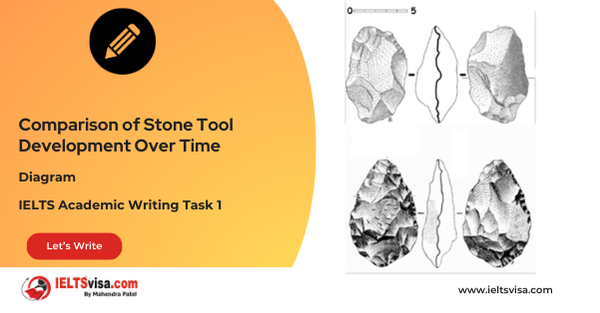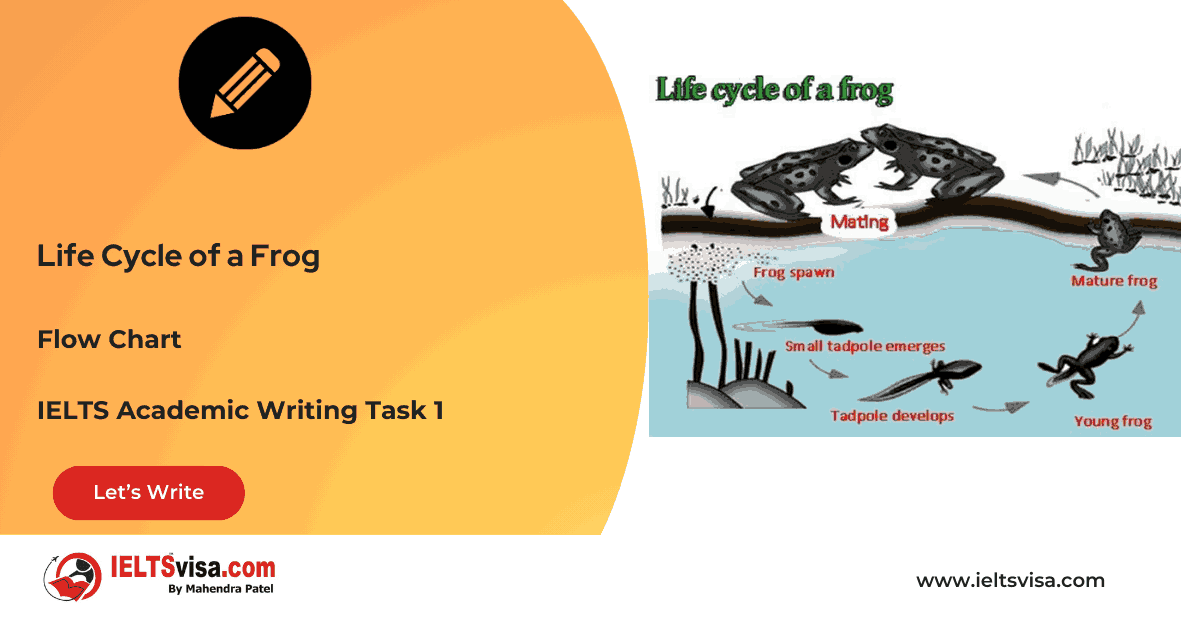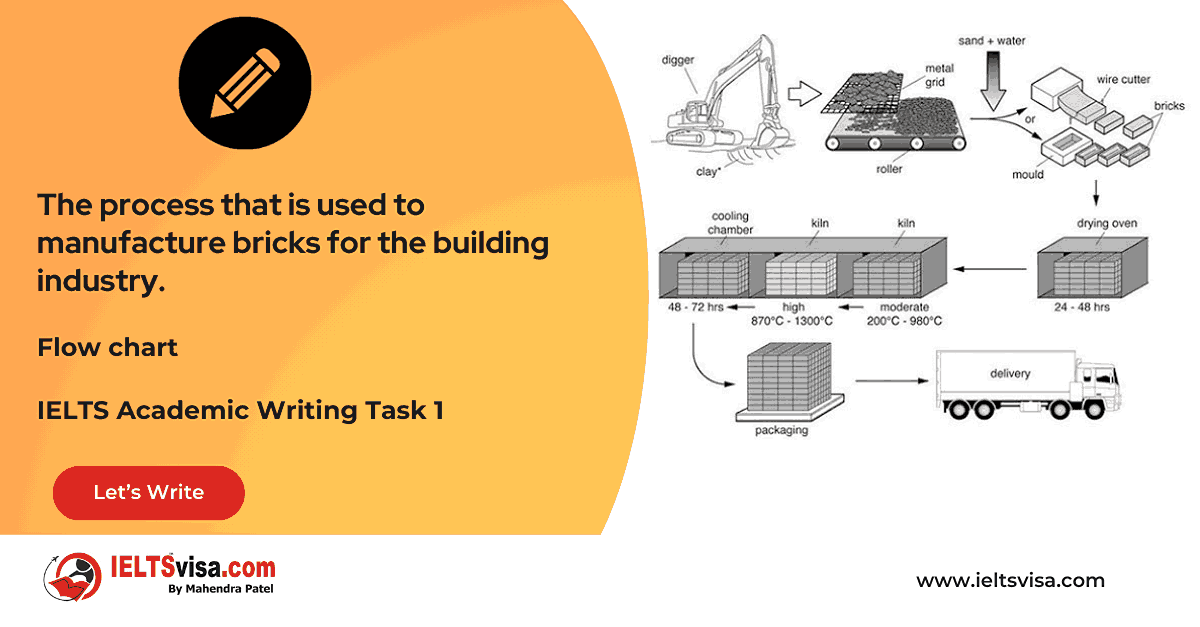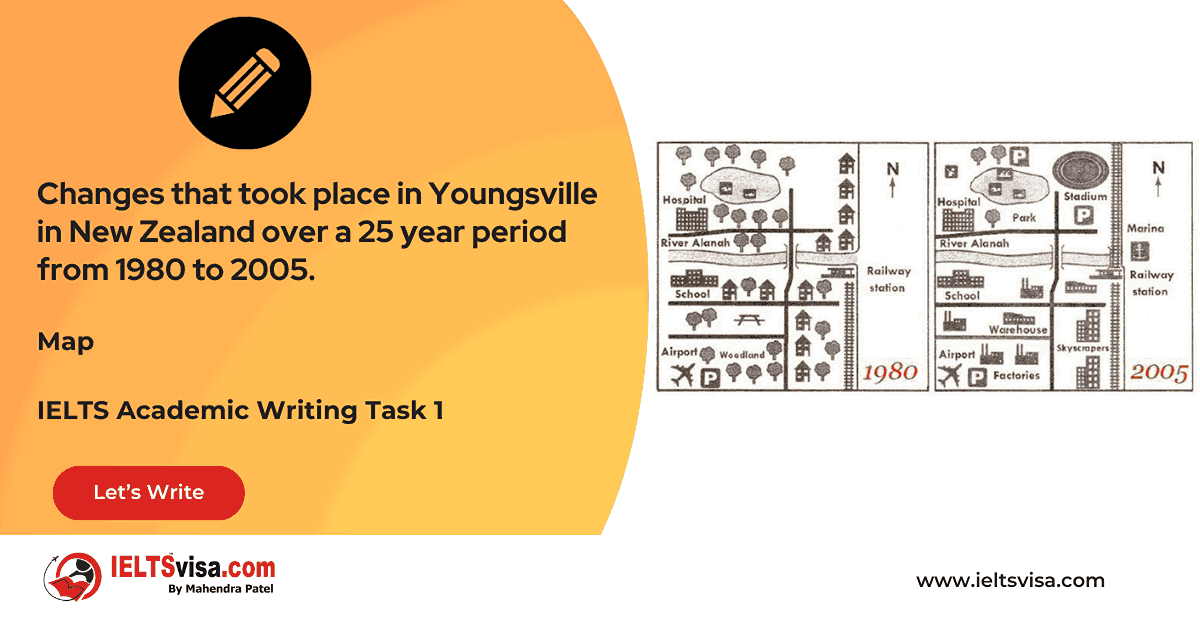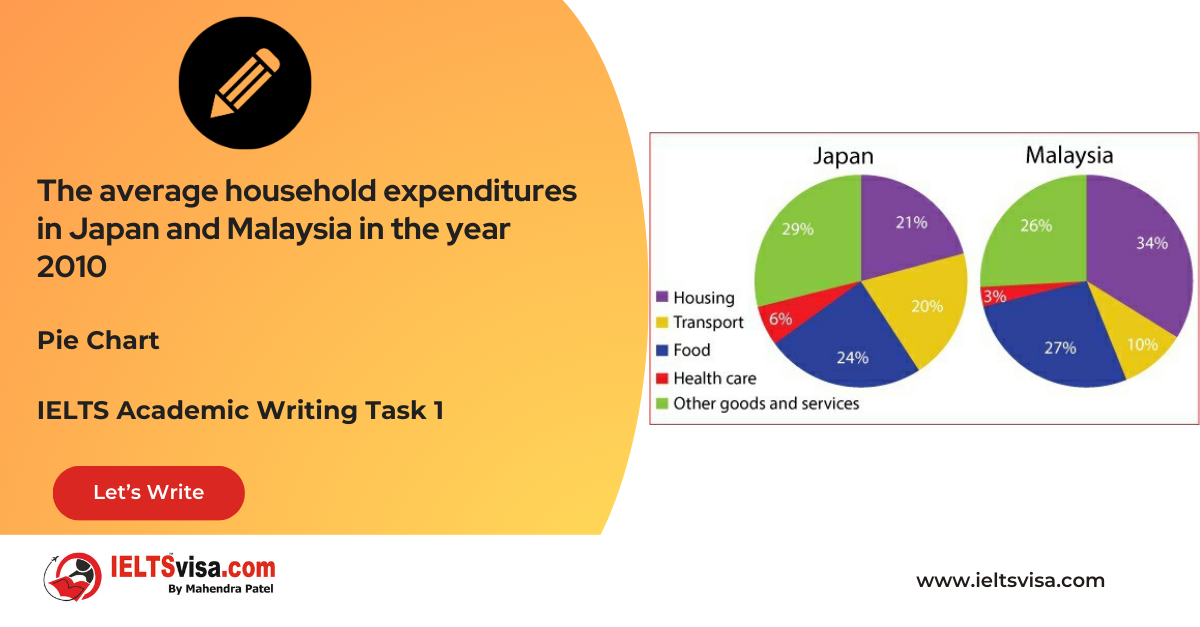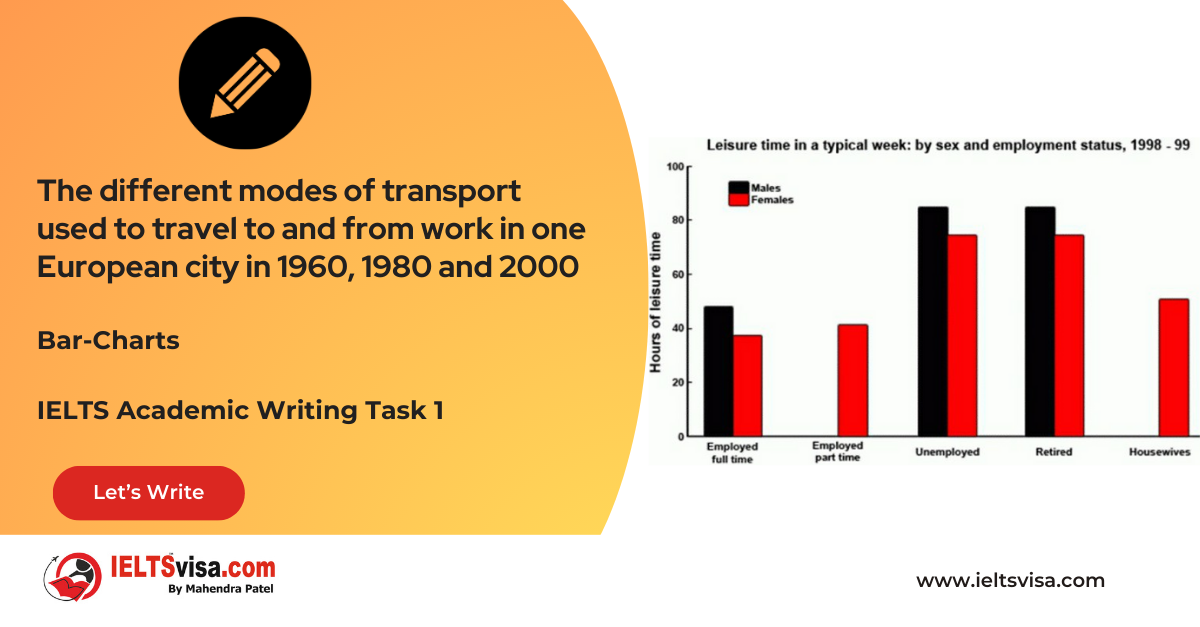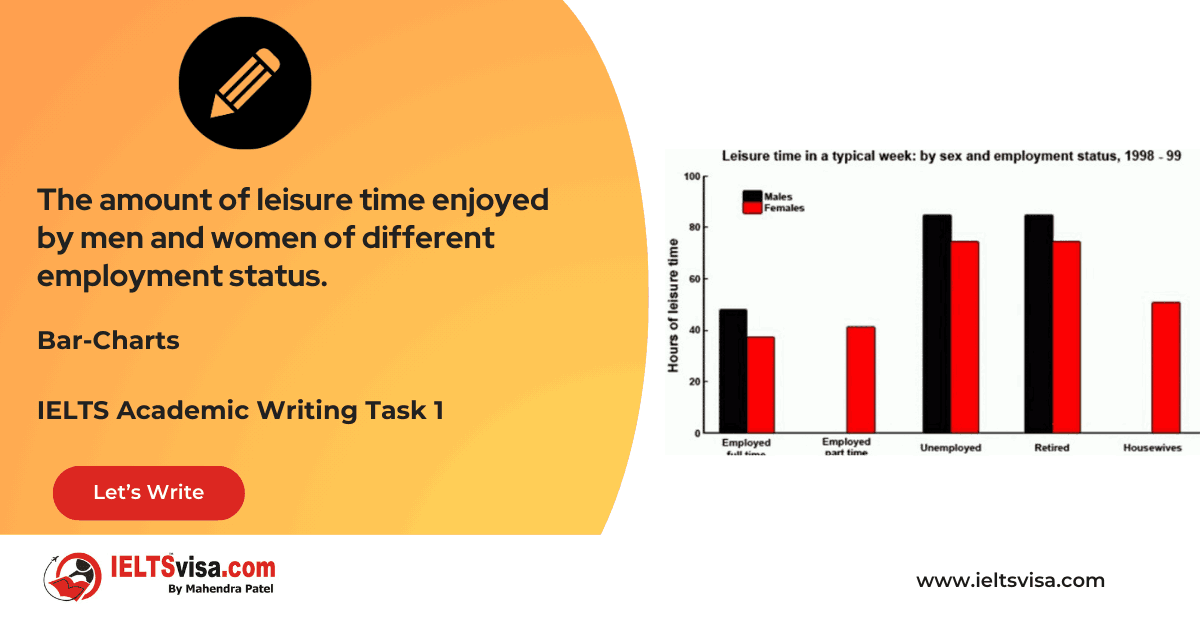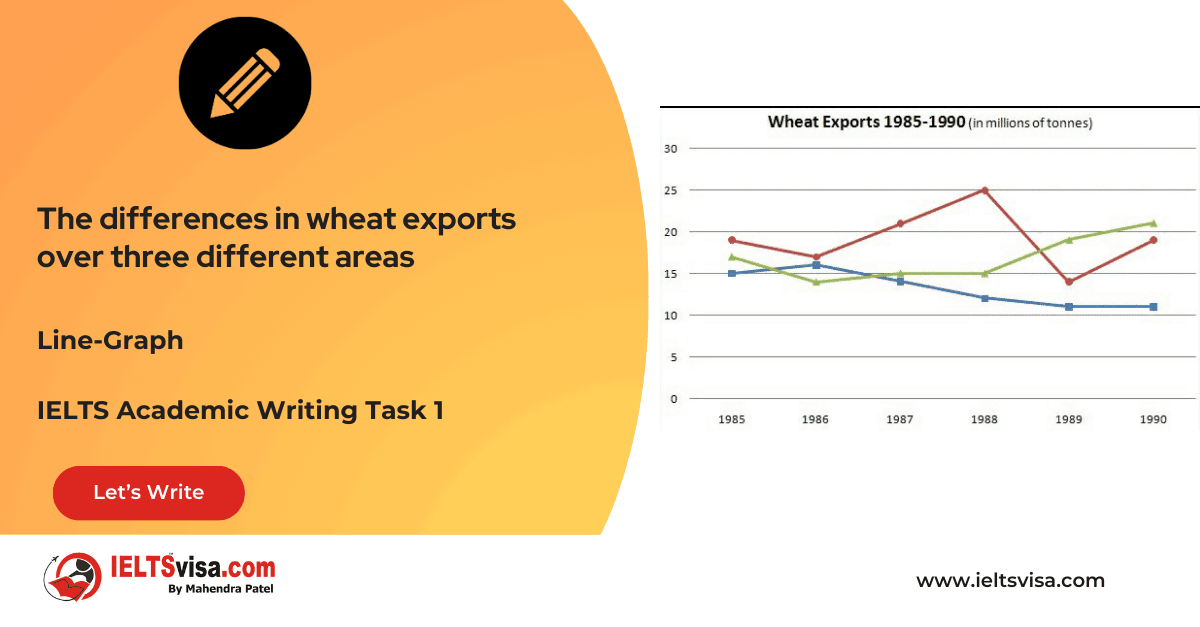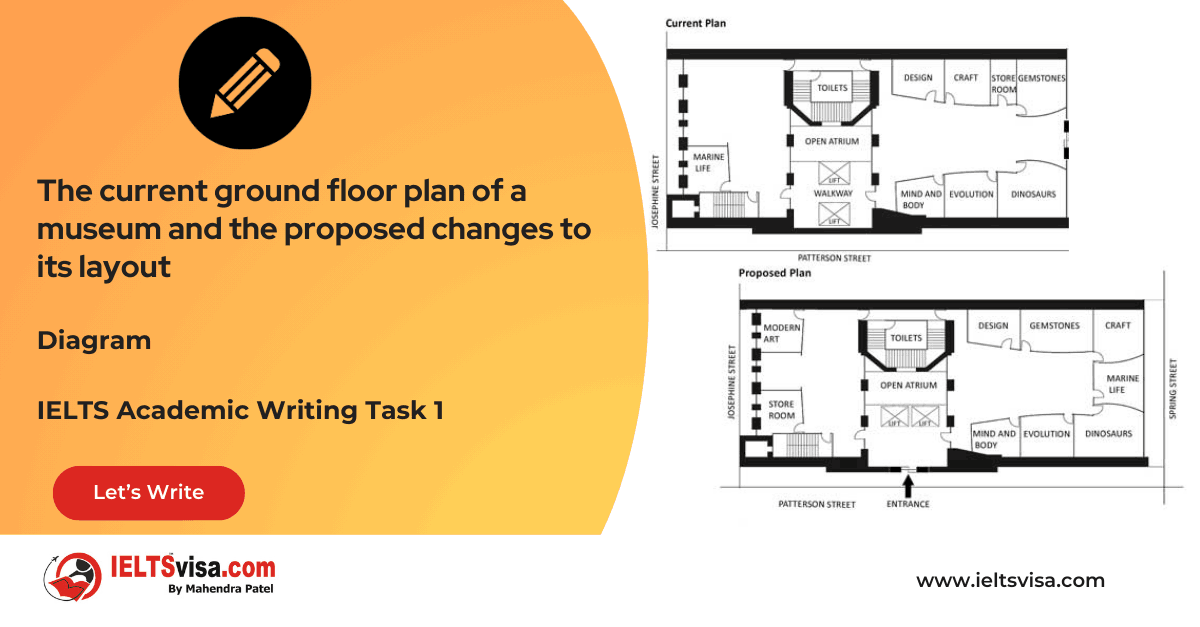Adding Extra Details and Explanations to Enhance the Description of the Process
ProcessesIELTS Academic Writing Task 1
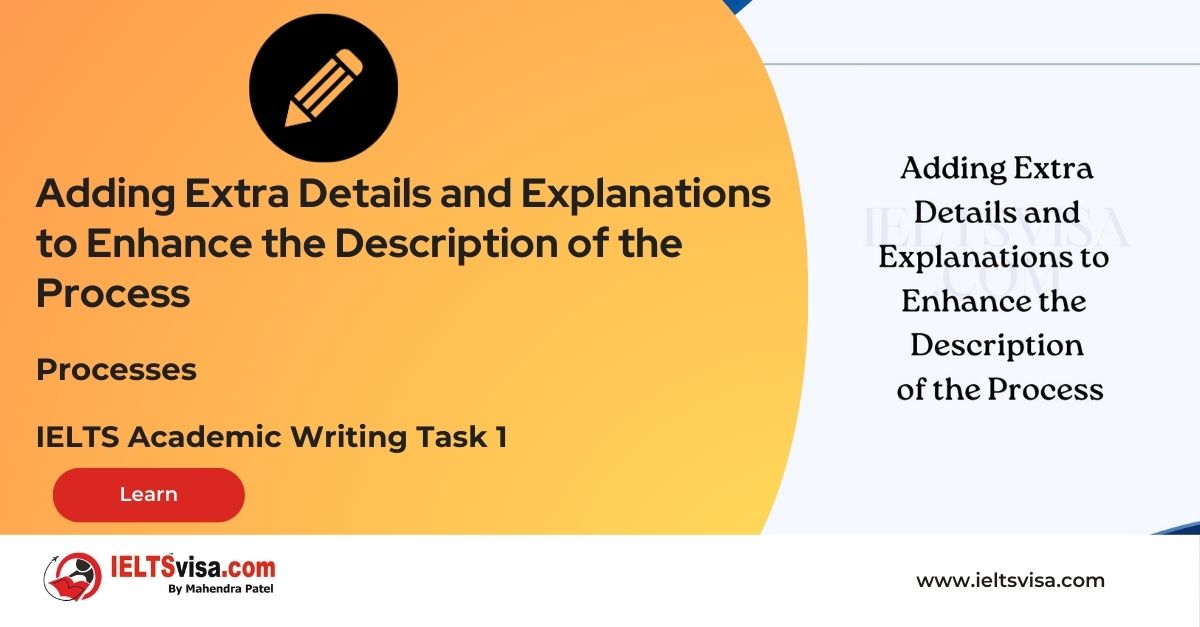
In the IELTS Academic Writing Task 1, candidates often encounter diagrams or flowcharts representing processes. Describing these processes accurately and comprehensively is vital to achieving a high score.
Adding extra details and explanations is an effective way to enhance the description.
In this article, we will explore how to provide additional information to enrich the description of the process, along with examples and sample answers.
1. Providing Extra Details:
Adding extra details helps to provide a more thorough understanding of the process. It allows you to give specific information about each stage, including quantities, measurements, or particular actions involved.
Here’s an example:
Example: The Water Purification Process Stage 1:
Raw water is drawn from the source and directed to the treatment facility through an intake pipe. This intake pipe has a diameter of 10 centimetres, allowing a flow rate of 500 litres per minute.
In this example, the extra details of the pipe diameter and flow rate provide specific information that enhances the description of the process.
2. Offering Explanations:
In addition to providing extra details, offering explanations helps to clarify the purpose or significance of certain stages or actions within the process. It lets you demonstrate a deeper understanding of the process and its underlying principles.
Example: The Production of Paper Stage 1:
Wood chips are soaked in water to soften them. This soaking process helps to break down the lignin, a natural adhesive present in the wood and separates the fibres for pulping.
In this example, the explanation about the purpose of soaking the wood chips provides insight into the importance of this stage in producing paper.
Sample Answer:
The given diagram illustrates the process of chocolate production. Additional details and explanations are included to enhance the description of the process.
In the first stage, cocoa beans are harvested from the trees and collected in baskets by farmers. These beans are typically harvested when they are fully ripe and have reached their maximum flavour potential.
Moving on to the second stage, the beans undergo a fermentation process. The beans are placed in shallow containers and covered during fermentation to create a controlled environment. This allows the beans to develop their unique flavours and aromas.
After fermentation, the beans are spread out in a single layer and left to dry under the sun. This drying process can take up to a week, depending on the weather conditions. Ensuring the beans are dehydrated is crucial to prevent spoilage during storage and transportation.
Next, the dried beans are roasted in large rotating drums. Roasting plays a vital role in developing the characteristic flavours of chocolate. The duration and temperature of the roasting process are carefully controlled to achieve the desired flavour profile.
Following roasting, the beans are winnowed to remove the outer husks. This is done by passing the beans through a series of sieves or air streams, which separate the husks from the inner nibs. The nibs contain the essential components for making chocolate.
In the final stage, the nibs are ground into a thick paste known as chocolate liquor. This paste is then processed further to separate the cocoa solids from the cocoa butter, the natural fat in cocoa beans. The cocoa solids and cocoa butter can be combined in different proportions to create various types of chocolate.
A comprehensive description of the chocolate production process is presented by providing extra details and explanations. This enhances the reader’s understanding and showcases a more profound knowledge of the process.
In conclusion, adding extra details and explanations in the description of processes in IELTS Academic Writing Task 1 enriches the overall response. It provides specific information, clarifies the purpose of each stage, and demonstrates a deeper understanding.
Practice incorporating additional details and explanations to create a well-rounded and informative process description.








Our Books
Master IELTS Speaking Part 1
IELTS Writing Task 1 Book
IELTS Writing Task 2 Book
Practice IELTS Other Modules
IELTS Listening
The IELTS Listening test assesses how well you can understand spoken English in various contexts. It lasts about 30 minutes and is divided into four sections with a total of 40 questions. The listening tasks become increasingly difficult as the test progresses.
IELTS Academic Reading
The IELTS Academic Reading section assesses your ability to understand and interpret a variety of texts in academic settings. It is designed to evaluate a range of reading skills, including skimming for gist, reading for main ideas, reading for detail, understanding inferences, and recognizing a writer's opinions and arguments.
IELTS Speaking
The IELTS Speaking test assesses your ability to communicate in English on everyday topics. It lasts 11-14 minutes and consists of three parts: introduction, cue card, and a discussion based on the cue card topic.
IELTS General Reading
IELTS General Reading tests your ability to understand and interpret various types of texts. Here are some key areas and types of content you can expect to encounter in the reading section, along with tips for effective preparation.
IELTS Academic Writing Task 1
In IELTS Academic Writing Task 1, you are presented with a visual representation of information, such as graphs, charts, tables, or diagrams, and you are required to summarize, compare, or explain the data in your own words.
IELTS General Writing Task 1
In IELTS General Writing Task 1, you are required to write a letter based on a given situation. The letter can be formal, semi-formal, or informal, depending on the prompt. Here’s a breakdown of the key components to include in your letter
IELTS Academic Writing Task 2
In IELTS Academic Writing Task 2, you are required to write an essay in response to a question or topic. Here’s a guide to help you understand the essential elements of this task
IELTS Exam Tips
To succeed in the IELTS exam, practice regularly, familiarize yourself with the test format, improve your vocabulary, develop time management skills, and take mock tests to build confidence.
Grammer for IELTS
Grammar is the foundation of effective communication in English. Understanding tense usage, subject-verb agreement, and sentence structure enhances clarity and coherence in writing and speaking.
Vocabulary for IELTS
Vocabulary plays a crucial role in the IELTS (International English Language Testing System) exam, especially in the Speaking and Writing sections. Here’s an overview of why vocabulary is important and how it impacts your performance
RECENT IELTS SAMPLES QUESTIONS AND ANSWERS
Task 1 – Diagram – Comparison of Stone Tool Development Over Time
20:00 Start Pause Stop [df_adh_heading title_infix="IELTS Writing Task 1 Question" use_divider="on"...
Task 1 – Flow chart -Life Cycle of a Frog
20:00 Start Pause Stop [df_adh_heading title_infix="IELTS Writing Task 1 Question" use_divider="on"...
Task 1 – Flow chart -The process that is used to manufacture bricks for the building industry.
20:00 Start Pause Stop [df_adh_heading title_infix="IELTS Writing Task 1 Question" use_divider="on"...
Task 1 – Map – Changes that took place in Youngsville in New Zealand over a 25 year period from 1980 to 2005.
20:00 Start Pause Stop [df_adh_heading title_infix="IELTS Writing Task 1 Question" use_divider="on"...
Task 1 – Pie Chart – The average household expenditures in Japan and Malaysia in the year 2010
20:00 Start Pause Stop [df_adh_heading title_infix="IELTS Writing Task 1 Question" use_divider="on"...
Task 1 – Bar Graph – The different modes of transport used to travel to and from work in one European city in 1960, 1980 and 2000
20:00 Start Pause Stop [df_adh_heading title_infix="IELTS Writing Task 1 Question" use_divider="on"...
Task 1 – Bar Graph – The amount of leisure time enjoyed by men and women of different employment status
20:00 Start Pause Stop [df_adh_heading title_infix="IELTS Writing Task 1 Question" use_divider="on"...
Task 1 – Line Graph – The differences in wheat exports over three different areas
20:00 Start Pause Stop [df_adh_heading title_infix="IELTS Writing Task 1 Question" use_divider="on"...
Task 1 – Diagram – The current ground floor plan of a museum and the proposed changes to its layout
20:00 Start Pause Stop [df_adh_heading title_infix="IELTS Writing Task 1 Question" use_divider="on"...

